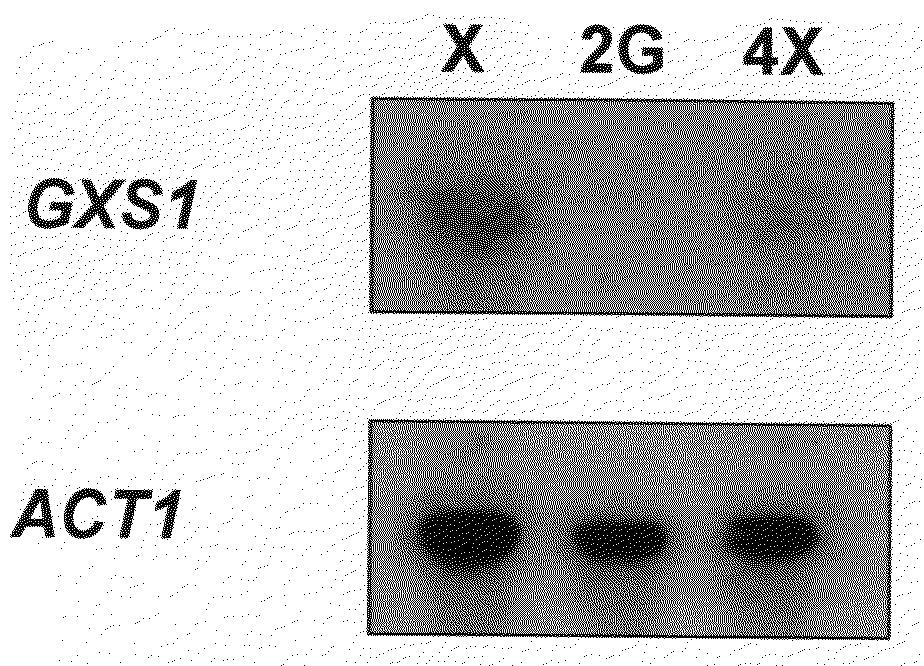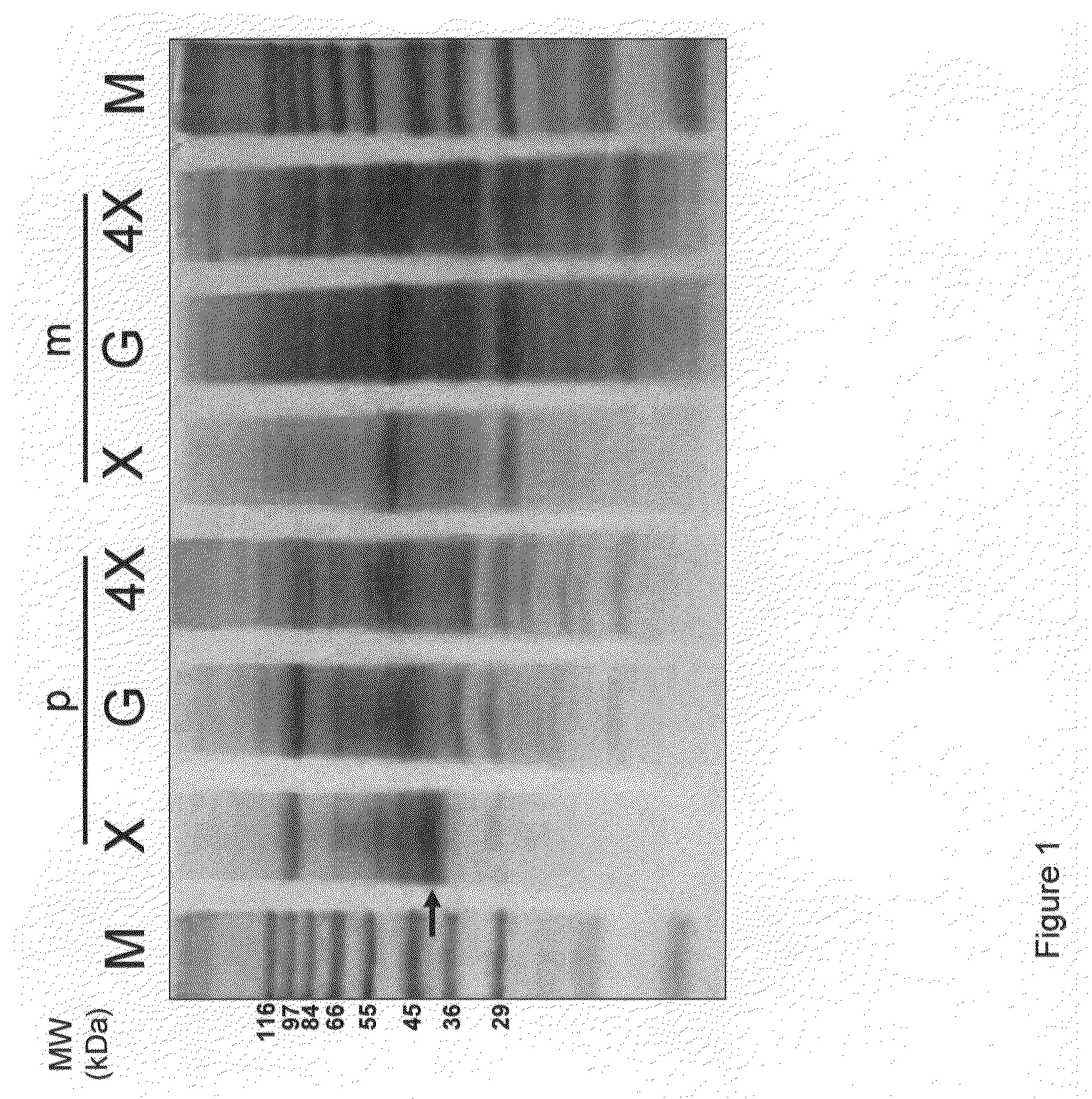Expression of an active carrier from xylose in genetically modified saccharomyces cerevisae
a technology of saccharomyces cerevisae and active carrier, which is applied in the direction of bacteria peptides, animal/human proteins, sugar derivatives, etc., can solve the problems of low productivity value, low xylose production, and yeast's natural ability to convert xylose into ethanol, etc., and achieves high affinity for xylose
- Summary
- Abstract
- Description
- Claims
- Application Information
AI Technical Summary
Benefits of technology
Problems solved by technology
Method used
Image
Examples
Embodiment Construction
[0031]According to a preferred embodiment of the present invention, a process to express in S. cerevisiae a xylose active transporter was developed. This process comprises the insertion of heterologous DNA in yeasts, integrating from that point on a gene for a novel xylose transport system of the xylose / glucose-proton symport type.
[0032]Referring to this invention, a process for isolating, cloning and expressing the gene was followed. However, alternative processes may be used by those skilled in the art.
Identification of the Xylose / Glucose-H+ Active Transporter by SDS-PAGE
[0033]The xylose / glucose active transporter from C. intermedia was identified by comparison of the relative abundance of the proteins present in plasma membranes isolated from C. intermedia cells cultivated under inducing and repressing conditions. With this objective, plasma membranes and mitochondrial membranes were isolated from cells cultivated in Verduyn medium (Verduyn et al, 1992) containing, alternatively,...
PUM
| Property | Measurement | Unit |
|---|---|---|
| Fraction | aaaaa | aaaaa |
| Affinity | aaaaa | aaaaa |
Abstract
Description
Claims
Application Information
 Login to View More
Login to View More - R&D
- Intellectual Property
- Life Sciences
- Materials
- Tech Scout
- Unparalleled Data Quality
- Higher Quality Content
- 60% Fewer Hallucinations
Browse by: Latest US Patents, China's latest patents, Technical Efficacy Thesaurus, Application Domain, Technology Topic, Popular Technical Reports.
© 2025 PatSnap. All rights reserved.Legal|Privacy policy|Modern Slavery Act Transparency Statement|Sitemap|About US| Contact US: help@patsnap.com



